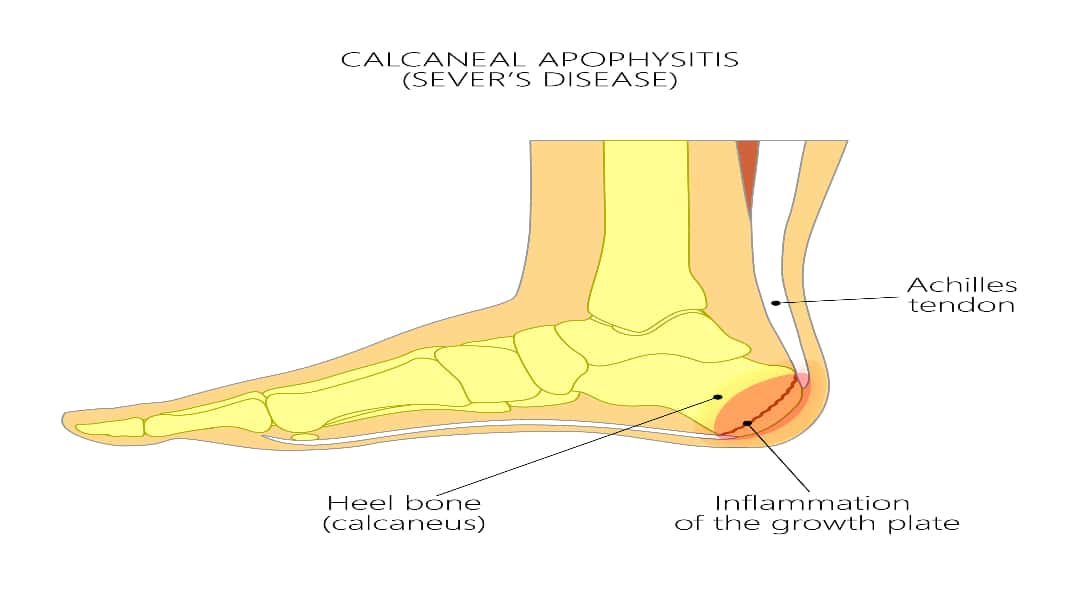How to Help Your Active Child Recover QUICKLY From Heel Pain
Developing a bad case of heel pain can be devastating for an active child, especially if they’re in the middle of a sports season.
The good news, at least from the parents’ perspective, is that most instances of heel pain in children can be treated conservatively and shouldn’t pose any long-term risks to their health or comfort, as long as your child takes the necessary time to rest, recover, and rehab.
But that can be very little comfort to a young athlete who is now facing the reality of missing games—or maybe even the rest of their season!
At Community Foot Clinic of McPherson, we understand what your family is going through. That’s why we’re so proud to offer MLS laser therapy as a treatment option to help kids recover quickly from heel pain as safely and comfortably as possible. That means fewer games missed, less rehab required, and happier kids—and parents, too!
Why Do So Many Active Kids Suffer from Heel Pain?
Although kids and teens are still susceptible to the same heel pain conditions that are common among adults, including plantar fasciitis and Achilles tendinitis, it’s much more likely that they are suffering from a condition called calcaneal apophysitis—also known as Sever’s disease (though it’s not actually a disease).
Calcaneal apophysitis is unique to kids, and it’s especially common around the “tween” and early teen years, when kids are growing rapidly and often getting into sports.
During this time of life, bones have yet to reach full maturity, and the ends of many bones (including the heel bone) are “capped” by a softer area of tissue called a growth plate. As the name suggests, growth plates are responsible for growing new bone tissue. They are also much more susceptible to becoming irritated and inflamed than harder bone.
The growth plate located along the bottom of the heel is in a particularly precarious position, since it’s highly vulnerable to impact forces from sports and active play. If your child has other potential risk factors, including tight calves, flat feet, or a leg length discrepancy, the risk of pain is even higher.

Traditional Treatment Is Simple But Often Takes Time
As we said, the good news is that calcaneal apophysitis is almost always a temporary problem that only requires simple home care tactics like rest, stretching, and if necessary the use of heel pads, orthotics, or walker boots.
However, the timeline of treatment may certainly be frustrating for both children and parents, as it can take a few weeks (or in some cases up to two months) to get better using traditional treatment methods alone. Furthermore, patients who are around 9 to 14 years old or so can sometimes have a harder time sticking to the “rest” part of the treatment plan than one who is a little older, which can potentially elongate the recovery time.
And that’s the story for only a single instance of calcaneal apophysitis. Imagine the frustration you’ll feel if it comes back!
MLS Laser Therapy Can Help Get Your Child Back in the Game Quickly (and Safely)
If you’re looking for a way to help your child recover quickly from heel pain, MLS laser therapy is a treatment option you should definitely consider.
Laser treatment is quick, convenient, painless, and drug-free—and when it’s added to a standard recovery plan for calcaneal apophysitis, it can help reduce the overall recovery time by up to 40%, or sometimes even more!
Laser therapy works by using light energy to naturally stimulate the biological healing processes already at work in your child’s body. There are actually two synchronized beams at separate wavelengths used for the therapy; one is primarily responsible for alleviating pain quickly, while the other focuses on reducing inflammation, getting more oxygen and nutrients to the cells, and accelerating natural tissue repair mechanisms (among other positive benefits).
Typically when adults with longstanding chronic pain get this treatment, we may schedule out a treatment plan of 6-10 sessions over the course of a few weeks. Kids, however, may respond faster and require fewer total sessions, although this varies from child to child.
Appointments are short, too, as a single therapy session usually requires no more than 10-15 minutes. And because the therapy isn’t just helping with symptoms, but actually helping heal their injuries, results tend to get better and better after each additional session.
Learn more about laser treatment at Community Foot Clinic of McPherson.
Putting Your Kid’s Health First
At Community Foot Clinic of McPherson, nothing is more important to us than ensuring our patients get the highest quality care possible, with a treatment plan that makes sense for their personal situation and needs.
If you want to give your active teen the best chance to recover quickly from heel pain, MLS laser therapy is well worth considering. But we’ll be sure to go over all your options with you, answer all your questions, and help you make the best possible decision for you and your child.
The one thing you shouldn’t do, however, is wait until symptoms become severe to give us a call. The earlier we start treatment for calcaneal apophysitis, the better and faster the outcome tends to be for your child. You can connect with us today by calling (620) 241-3313, or using our contact form to submit an appointment request online.
McPherson Office
316 W. 4th Street
McPherson, KS 67460
P: (620) 241-3313
F: (620) 241-6967
© Community Foot Clinic of McPherson. All Rights Reserved.
Privacy Policy | Terms & Conditions
Web Design by CP Solutions
Marketed by VMD Services
